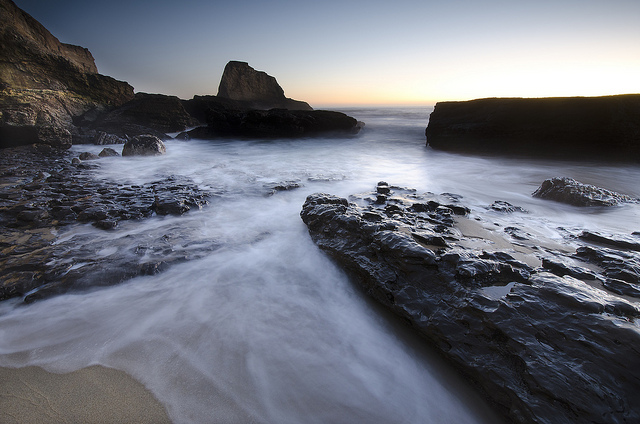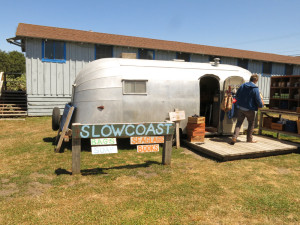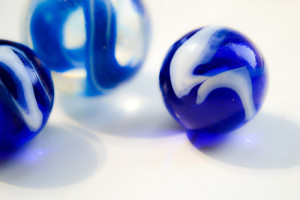My work in the words of others in print and around the web.
Sampling of recent press collected from ISSUU, newspapers, Google News & more.
Bay Nature: This is your brain on nature
Posted on Jul 31st, 2013by Will Fraker on July 31, 2013 in Stewardship
Photo: Heather Young > Wallace J. Nichols started the Blue Marble project.
You’ve probably experienced this yourself — the stress, the feelings of fear and helplessness that come packaged with environmental problems. Carbon levels have reached 400 parts per million in the atmosphere, one-third of all species may be lost by mid century, the Pacific Garbage Patch has grown to more than 250,000 square miles.
Is your heart rate going up? Nichols, an evolutionary ecologist and research associate at the California Academy of Sciences, says that on a neurological level, most people shut down in the face of anxiety and fear around environmental issues. In order to gain traction, conservation efforts need to inspire empowerment, responsibility, and compassion. The solution? Apply a new object of study to conservation: the human brain.

Does this make you feel the love (for nature?). Hole in the Wall Beach, Davenport. Photo: Sudheer G/Flickr.
“We know more about our brains on chocolate, and our brains on red wine and pretty far down on that list are things like your brain on water,” Nichols said. “The dominant feature on the surface of our planet seems like fair game for neuroscience to think about, but for some reason hasn’t been.”
Nichols has dubbed this approach “neuro-conservation,” and he hopes to raise awareness of the cognitive benefits of exposure to a clean, healthy nature. In so doing, our neurological response shifts away from stress and towards hope and compassion.
The logic is simple and elegant, yet ripe with possibility; by including the cognitive benefits of nature in the broader discussion of ecosystem services and wildlife conservation, a more complete picture is generated in which the interests of humans and nature are aligned and intertwined. With this connection made, conservation is the meaningful course of action, for everyone involved.
In the hopes of drawing deserved attention to the tenets of neuro-conservation, with a focus on the ocean, Nichols has spearheaded two initiatives, the Blue Mind Conference, and the Blue Marbles Project.
Cross-pollinating ideas
Once a year, The Blue Mind Conference, which began in 2011, brings together neuroscientists, artists, athletes, and activists, in the hopes of creating a hotbed for cross-pollination, generating new ideas and new research. The hope is that, with the authority of neuroscientific evidence to embellish the anecdotes of ocean and nature related experience and activism, it becomes harder to devalue their insights as ‘soft’ or ‘subjective’. And conversely, important neuroscientific insights escape the pages of journal articles and are given life, reaching a wider audience and receiving more universal attention.
Nichols described the conference as the gathering and connecting of dots. To help me better understand, he told me a story. In Santa Cruz, 15 miles south of Nichols’ home, there’s a project called Operation Surf run by former pro surfer Van Curaza, which takes recent veterans, lots of whom are amputees, for a week long session in the Pacific Ocean. Nichols, who volunteers with them regularly, tells me the story of a man named Martin, a triple amputee who has rediscovered a profound sense of peace, purpose, and excitement since beginning surfing. Something about the ocean and surfing has helped heal the psychological damage of war and his injuries.
“This could be science,” Nichols says. “This isn’t, this is one guy’s experience, but there could be some science that would look into stuff like this. Clearly there’s a biological basis and a chemical basis to what’s going on, and therefore its study-able. These conversations begin with one anecdote—the science always begins with one observation.”
By connecting one dot, Martin’s experience of surf therapy, with another, perhaps a PTSD lab at Stanford, new knowledge is created that could provide an alternative to high side-effect drugs and a holistic argument for ocean conservation. This is the kind interdisciplinary thinking that the Blue Mind Conferences have accomplished and continue to pursue. Blue Mind 4 will be held in partnership with the University of Exeter on the Cornish coast of England in June 2014.
Not a hippy Californian
The Blue Marble Project incorporates neuroscience in a different way. Beyond providing scientific support for conservation, neuroscience can provide important clues for how to approach conservation and present information.
“If we hope to really build a movement,” Nichols says, “it has to come from gratitude and love, HAS to. And I don’t say that as a hippy Californian, I say that from a scientific point of view.”
When we are confronted with stressful information, cortisol levels rise, which leads to increased adrenaline and norepinephrine. These neurotransmitters either provoke a ‘fight’ response, an angry and aggressive environmentalism that is often met with more criticism than support, or ‘flight’, the process of ignoring and denying all the ‘eco’ or ‘green’ logos, companies, or campaigns that are associated with that stress.
But conservation can take a different path. In Obama’s recent climate speech, he recalls how, to the astronauts of Apollo 8, the earth appeared as a “glowing marble of blue oceans.” The Blue Marble Project bypasses fear mongering, and seeks to reawaken the sense of awe, respect, and peace that those astronauts felt as they peered back at the blue marble we call home.
By inspiring individuals to share messages of gratitude and love in conjunction with the gifting of a blue marble, The Blue Marble Project harnesses the power of compassion to disseminate knowledge about the planet’s waters and their cognitive benefits, keeping the conversation alive. The brains of those receiving the marbles and the message of gratitude begin producing oxytocin, opening their minds to all the knowledge and metaphor carried within the marble, and encouraging them to pass it forward. The project has the audacious goal of passing a blue marble through every hand on earth.
Every conservation movement requires sound science and effective communication. Neuro-conservation skillfully utilizes the insight of neuroscience to accomplish both of these goals. Already, Nichols’ work is sending ripples throughout the world; blue marbles have passed through the hands of many celebrities including E.O. Wilson, Jane Goodall, and Harrison Ford. I’ll bet that if you ask a few friends, at least one will have either heard of the project or received a blue marble themselves. When I asked Nichols about his goals, he stated,
“How would I measure success? I’d say everybody on the planet knowing something about their brain on water.”
With a humbling reminder that love beats hate when it comes to getting your voice heard, Nichols is well on his way to achieving this goal.
Will Fraker is a Bay Nature editorial intern.
To post a comment, please login.
View this profile on InstagramDr. Wallace J. Nichols (@wallacejnichols) • Instagram photos and videos
What's New
Rochester Women's Magazine
If You Want To Heal, Find Water
Where did our water come from? One theory is from comets and asteroids nearly 4 billion years... continue
New Trader U
The Science Behind The Ocean's Effect On Our Brain
The ocean has long been a source of fascination and wonder for humans. Its vast expanse, rhythmic waves... continue
Red Bull: Understanding the Blue Mind Theory: How water influences our well-being
Read ahead to learn all about this potential mind-body-water connection.
Red Bull surfer Kai Lenny will take any chance he can get to spend time in the sea. &ldquo... continue


